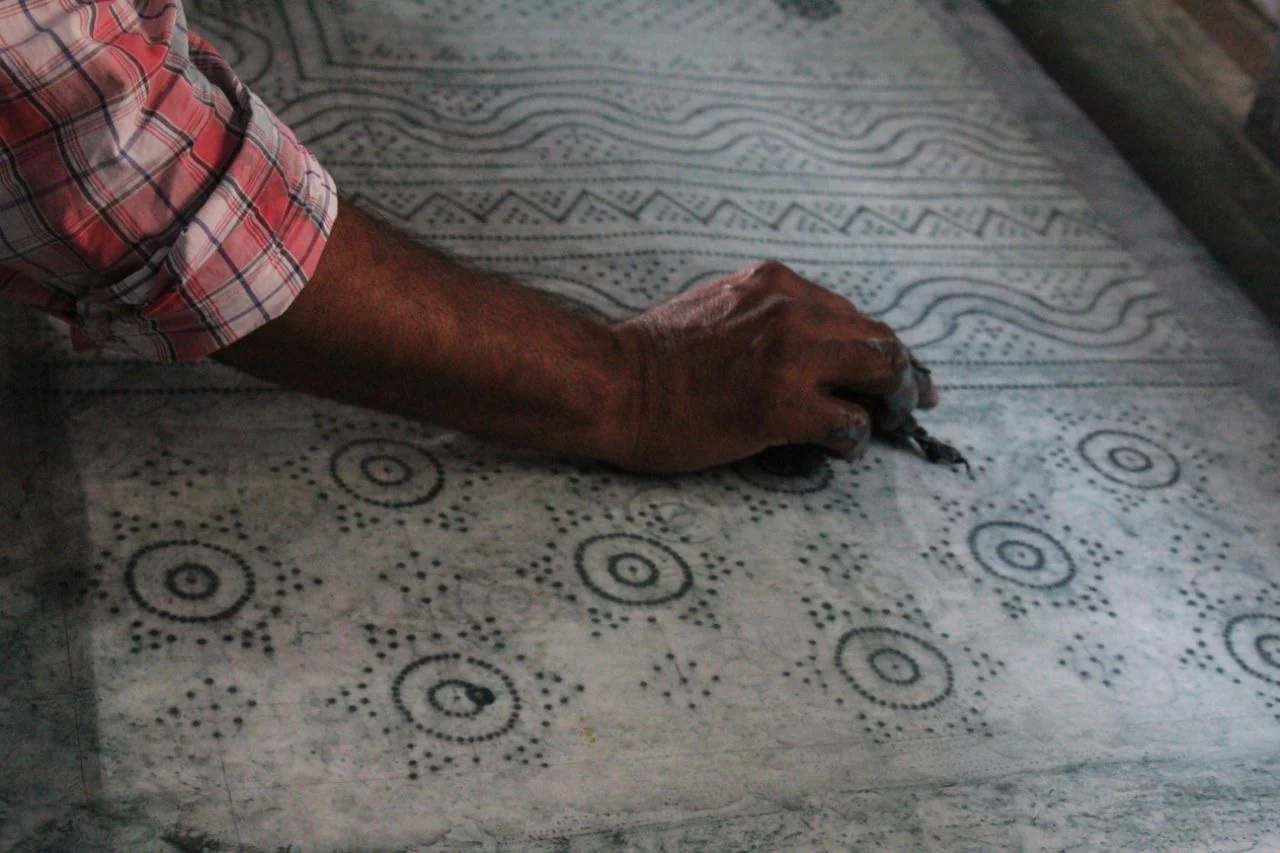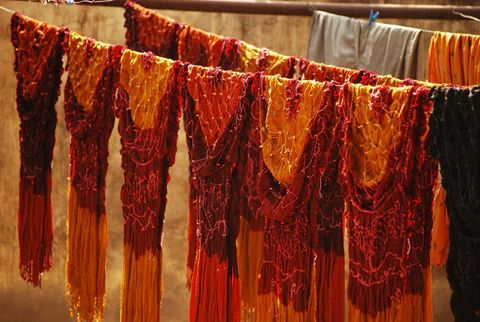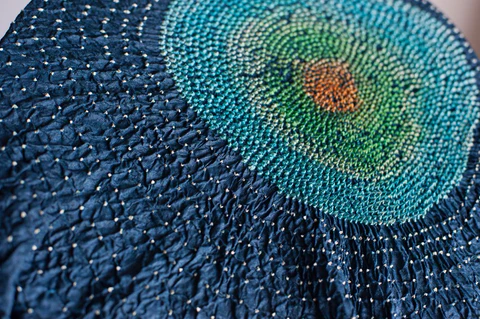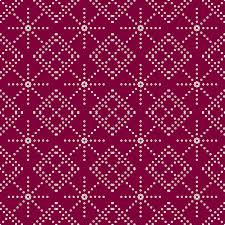Bandhani saree
- Trusha Kenil
- Feb 7
- 6 min read
Updated: Apr 8
Introduction of Bandhani sarees

Bandhani is a kind of sprinkle assortment material improved by winnowing the surface with the fingernails into different little ties that structure a non-serious blueprint. In Gujarat, Rajasthan, Panjab, Sindh and in Tamil Nadu Bandhani sarees are made mostly. In Pakistan these sarees are called chunri. Earliest affirmation of Bandhani follows what many would consider possible back to Indus Valley human progress where masking was done when 4000 B.C. The earliest arrangement of the most specific sort of Bandhani pieces should be conspicuous in the sixth century creative appearances portraying the presence of Buddha found on the mass of Sinkhole at Ajanta. Bandhani is by and large called Bandhej Saree, Bandhni, Piliya, and Chungidi in Tamil and neighborhood dialects. Other tying methods include concrete Mothra, Ekdali and Shikari relying upon how the surface is tied.
Rajasthan and Gujrat are well known states for Bandhani saree. Bandhej or Bandhani is a marvelous workmanship and can be generally seen worn by women, yet similarly by men. Bandhani odhnis are in like manner worn by various ladies on cheerful occasions. Bandhani will overall lose its guts, if it is pushed on extreme focus so it is urged to wash or press it on a low power setting. Bandhani print is oftentimes enhanced with reflect work or gota work, to give it a remarkable look.
Technique of Bandhani
The most well-known approach to settling on Bandhani surface starts with the decision of a lightweight surface, regularly cotton or silk. The surface is washed and hued in a base tone. Then, gifted craftsmans demandly join little packages of the surface with string, molding infinitesimal bundles. These bundles go about as against centers, holding the variety back from invading those locales.
The bandhani framework is a customary sprinkle assortment strategy used to make unimaginable arrangements on sarees, dupattas, and salwar kameez. The method consolidates and attaches little areas of surface with string, then, at that point, conceals it in mind blowing tones.
Steps:
Set up the surface: Wash and dry the surface, then, mark it with spots using chalk or pencil.
Tie the surface: Press a little area of the surface and tie them with string to shape hitches. These packs are distributed "bheendi" in Gujarati.
Variety the surface: Dunk the surface into a collection shower. The surface is ordinarily plunged on various events, including different tones for each shower.
Keep the packs: After each eclipsing, mindfully relax the gatherings to uncover the undyed regions.
Go over: Repeat the tying and disguising cycle to make the best model.
Types of Bandhani sarees

1. Bandhani Silk Saree:
Bandhani silk sarees are known for their color tones which involve different shades of Red, Blue, Green and Yellow.
The mix of silk surface and Bandhani creative mind credits a nature of simplicity and appeal to Bandhani silk sarees. Bandhani silk sarees are often wear at gathering and any occasion.

2. Ekdali Bandhani Saree:
Ekdali Bandhani Saree is an outstanding style that started in Kutch, Gujarat. 'Ekdali' implies one spot, and the saree is made using a singular colossal touch, which is sprinkle shaded in a specific model. The assortments used in Ekdali Saree are by and large stifled and coarse, giving it a characteristic and customary feel.

3. Pure Bandhani Cotton Saree:
Pure cotton Bandhani sarees are depicted by the use of typical cotton surface with the eccentric Bandhani technique, making novel captivating models. Before the shading framework, a little piece of the cotton surface is held solidly with string using iron nails.
Pure Bandhani cotton sarees in sending out vibes are an enchanting strategy for conveying your contemplations in a fundamental yet traditional way.

4. Chandrakhani Bandhani Saree:
This saree incorporates a moon-devised strategy that is made by tying the surface in little circles and a short time later shading it.

5. Bandhani Chiffon Saree:
Of late, chiffon surface has changed into the for the most part adored. It is touchy and is made of silk and different materials like nylon and polyester. This material is viewed as all over the place and the sarees are open in different models
Bandhani chiffon sarees are lightweight and simple to-wrap sarees that join the ideal specialty of Bandhani tie-and-assortment with the sheer class of chiffon surface. The style of the chiffon surface improvements the force of the Bandhani designs brilliantly, permitting abundant and isolating groupings to radiate through.

6. Gaji Bandhani Saree:
Produced using sumptuous Gaji silk, these sarees grandstand the creativity of Bandhani splash-color, a procedure beginning from the energetic place that is known for Gujarat, India

7. Leheriya Bandhani Saree:
Leheriya Bandhani sarees are a piece of the Jodhpur and Jaipur Bandhani saree signs portrayed by corner to corner, confound lines appearing to be the undulating downpours of water. This plan gives the saree a striking and dynamic appearance. The fiery arrangement decisions of these sarees make them reasonable for bubbly events.

8. Bandhani Crepe Saree:
Crêpe, moreover spelled crepe or crape (from the French crêpe), is a silk, downy, or made fiber surface with an especially new and badly creased appearance. The saying "crape" dependably suggests a sort of the surface related unequivocally with grieving. Crêpe was similarly commonly called "crespe" or "new".
Bandhani crepe sarees gloat a substitute social occasion of plans from model round spots, to dazzling Chandrakhani plans of bow moon shapes. Bandhani crepe sarees incorporate local subjects and great lines, adding a dab of nature and clean to the tie-and-grouping Bandhani system.

9. Bandhani Georgette Saree:
Bandhani Georgette sarees flood style and complex plan pursuing them a stunning decision for partywear and great times. Bandhani Georgette sarees are a wonderful blend of lightweight Georgette surface and complex instances of Bandhani craftsmanship. They are a mix of the standard craftsmanship of Bandhani workmanship into current surface like Georgette.

10. Shikari Bandhani Saree:
Shikari Bandhani sarees get their name from the Shikari plan, which mirrors the impressions of trackers, animals and the bits of the trees. This impulsive plan is very woven all through the saree surface making a particular model for Bandhani sarees. Shikari Bandhani Saree design is started in Kutch which is located in Gujarat

11. Gharchola Bandhani Saree:
The word Gharchola implies "home apparel" or "outfit for home", which derives that the lady is invited and perceived into her new home. The Gharchola is generally given by the mother by marriage to the lady, who wears it as a head or shoulder wrap, called Odhani or Chunari. Gharchola Bandhani sarees are viewed as promising and are recognized to pass best of luck on to the lady. Close to weddings, they make a point to facilitate your remarkable events. Gharchola sarees are generally made in the Khambhat region of Gujarat

12. Panetar Bandhani Saree:
The Panetar bandhani saree is worn by Gujarati ladies on their marriage functions. Panetar bandhani sarees often have red and white color combination . These assortments address equilibrium and love in Gujarati culture, and the outfit is for the most part skilled to the woman by her maternal uncle or 'mother'.
Bandhani patterns
kinds of Bandhani patterns
FAQs about Bandhani saree
1. what is bandhani saree?
Bandhani is a procedure for restricting little packs and concealing them in various groupings to convey delightful models. This tying was regularly wrapped up with fingernails for making. In any case, in unambiguous spots of Rajasthan, specialists wear a metal ring with a sharp nail to help winnowing the material without any problem.
2. How to drape Bandhani saree?
Stage 1: Accumulate Your Vagabond pieces
Before you start, guarantee you have:
A well-fitted pullover.
A slip or saree underskirt that matches the saree tone.
Self getting pins to get the kinks and pallu.
Satisfying footwear to remain mindful of act while hanging.
Stage 2: Get the Saree into the Slip
Begin around the consummation of the Bandhani saree without plans, in general called the internal edge.
Wrinkle the saree over your midriff, tucking it faultlessly into the underskirt.
Guarantee the saree falls much the same way over the floor. Acclimate to an ideal, essential look.
Stage 3: Make the Kinks
Hold the surface in front and begin wrinkling it into tantamount folds (around 5-7 creases).
Once collapsed, get the pleats into the slip, decently aside of your navel.
Secure the kinks with a self locking pin to keep them set up.
Stage 4: Imperfection Over and Improvement the Pallu
Take the saree around your waist once more, covering your back.
Present it over your gave shoulder to frame the pallu.
Guarantee the pallu grandstands the shocking Bandhani models and falls deftly at knee length or lower, taking into account propensity.
Stage 5: Style the Pallu
Quickly dropping Pallu: Let the pallu stream uninhibitedly for a casual, standard look.
Collapsed Pallu: Bend pallu to superb pleats and ensure it on your shoulder with a self getting pin for an organized look.
Stage 6: Last Contacts
Change the kinks and validation the saree folds in essentially a comparative manner over your body.
Secure extra nuances or regions with mindful pins for an ideal affirmation.
Coordinate with standard pearls, like bangles, jhumkas, and a jewelry, to refresh the saree's rich keen.





























Comentários